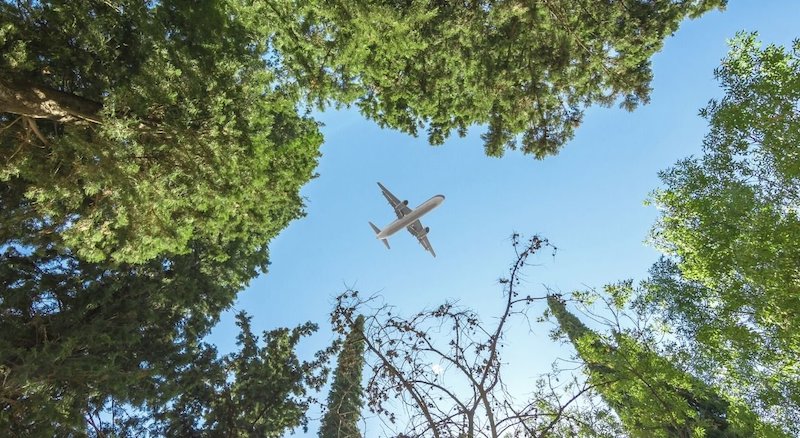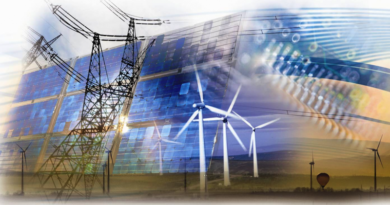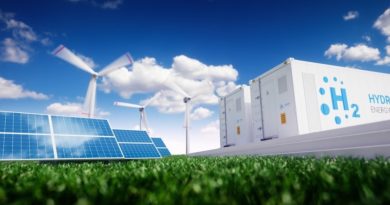
Decarbonisation of Aviation – Will the EU ETS Aviation proposal fly?
The European aviation industry is currently facing enormous challenges. On the one hand, travel restrictions, border closings and the concerns of passengers due to the corona pandemic are leading to falling passenger numbers and airline revenues. On the other hand, the industry is facing the challenge of decarbonisation with possible solutions like fleet renewal, sustainable aircraft fuels, operational changes for CO2-neutral airport operation and more efficient flight management in European airspace of air traffic.
The European Green Deal sets the standards for the transformation of the European Union into a modern, resource-efficient and competitive economy. These mutual agreed ambitions follow the aim to achieve climate neutrality by 2050 and to reduce economy-wide greenhouse gas emissions by at least 55%, until 2030 (compared to 1990 levels).
This would correspond to the Paris climate goals and was underlined again at COP26 in a declaration by the International Aviation Climate Ambition Coalition1.
International aviation accounts for 2-3% of global CO2 emissions2 and is contributes to climate impacts from emissions other than CO23. A forecast by Eurocontrol on the future development of air traffic (progression of the vaccination campaign, coordinated interregional approach, looser travel restrictions, assuming the recovery of business aviation) assumes that the level of 2019 could be reached in mid/end 2023 and will continue to grow thereafter.4 The Commission’s Fit for 55 program consists of a bundle of measures to implement the climate targets. In addition to targets, regulations and support measures, the revision of the EU-ETS will above all send a stronger price signal for carbon that is necessary to face the challenges of decarbonisation described above. From my point of view, the use of price instruments is associated with little disadvantageous distributional effects. Airlines and other operators can consider these climate costs in their business decisions. Certificate trading such as the EU-ETS and offsetting schemes such as CORSIA5 at ICAO6 level are currently the best solution.
As part of the Fit for 55 program, the European Commission proposes a tightening of the EU- ETS for air traffic as well as the formal implementation of CORSIA and its application on extra-EEA routes.
Basically, the previously active system will remain in effect and will be fully restored with the end of the exemption for emissions from extra-EEA flights by December 31, 20237. CORSIA is used for application on extra-EEA routes8. The revision provides for an annual lowering of the European Aviation Allowances by 4.2% and an expiry of the free allocations by 2027.
In this early stage of negotiations, it is of utmost importance to me to scrutinise the proposals in details. The proposed changes will result in cost increases mainly for intra-EEA flights and for routes via EEA hubs directly affecting the European aviation industry. Certain routes are currently exposed to carbon leakage. Taking a flight from Porto via Munich to Seoul, the feeder flight with European airlines from Porto to Munich is subject to the EU-ETS, whereas a feeder flight by a non-European airline from Istanbul to Porto would be not. In the end, the customer decides on the price which route to choose. Flight tickets and routes that are not subject to the EU-ETS are correspondingly cheaper, so that hubs outside Europe (Istanbul, Doha, Dubai) have a competitive advantage in this case. For me, the principle “same conditions on same route” has to apply.
In addition, we need to take a look at the interaction with other measures from the Fit for 55 package. An admixture rate of SAFs, as suggested in RefuelEUAviation9, must ensure that not only intra-EEA flights are affected.
By making an obligation to refuel before departure from an EU airport, carbon leakage could be avoided. I reject the taxation of kerosene in accordance with the proposal of the Energy Taxation Directive10. The risk of double taxation through the EU-ETS, CORSIA and a tax would weaken the competitiveness of European carriers. The effect of such a tax would have no steering function, because it is not linked to a reduction in emissions, nor is the revenue earmarked for the research and development of SAFs11.
Some big polluters as China, India or Russia do not participate in CORSIA yet. It is important to me that these countries are also convinced to voluntarily participate in the offsetting scheme, before its mandatory application from 2027 to all states.
Aviation is international and efforts to protect the climate and burdens must be shared internationally as well, enabling fair competition in the sector.
I will closely monitor developments at ICAO level and work for an ambitious offsetting scheme that does not fall short of the expectations of the climate targets.
In terms of research and investment, the auction revenues should be used on climate and energy purposes. Member States can furthermore make use of the increased Innovation Fund for the production of low and zero-carbon fuels in aviation or the increased Modernisation Fund.
______________________________________________________________
1 see: https://ukcop26.org/cop-26-declaration-international-aviation-climate-ambition-coalition/.
2 see: IPCC, 2018, IPCC special report on the impacts of global warming of 1.5°C.
3 see: COM(2020) 777 quantifies these impacts, while COM(2020)747 and associated documents analyse these effects in detail.
4 see: https://www.eurocontrol.int/publication/eurocontrol-forecast-update-2021-2027
5 Carbon Offsetting and Reduction Scheme for International Aviation
6 International Civil Aviation Authority
7 see: COM (2021) 552 final
8 see: COM (2021) 567 final
9 see: COM (2021): 561final
10 see: COM (2021): 563 final
11 Sustainable Aviation Fuels




